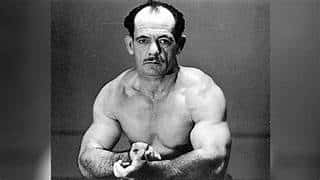Arthur Jones’s name has been in the headlines recently after the sudden and unexpected news of his passing. A powerful defensive lineman, a Super Bowl champion and a beloved teammate, Jones left a meaningful mark on the NFL and the communities that followed his career. This article walks through his life, career highlights, impact on and off the field, and answers common questions readers have about him.
Who was Arthur Jones? — A brief introduction
Arthur Willis Jones III (born June 3, 1986) was an American football defensive lineman who played in the NFL for multiple seasons. Known for his size, quickness and infectious positivity, Jones rose from Syracuse University to become a role player on the Baltimore Ravens’ Super Bowl XLVII championship team. His sudden death in October 2025 shocked fans and teammates alike.
Early life and college — foundations of a professional
Arthur grew up in Rochester, New York, and attended Union-Endicott High School, where he starred in football and wrestling. He went on to play at Syracuse University, developing into a reliable defensive tackle over his college career. His combination of athleticism and technique made him a mid-round NFL prospect entering the 2010 draft.
NFL career — climb to a Super Bowl ring
Draft and early years with the Ravens
Selected in the fifth round of the 2010 NFL Draft, Jones signed with the Baltimore Ravens and gradually carved out a role on the defensive line. He became known for occupying blockers, collapsing pockets and making key plays in short-yardage and red-zone situations.
Super Bowl XLVII and on-field impact
One of the defining moments of Jones’s career came during the Ravens’ run to and victory in Super Bowl XLVII. He contributed during that postseason and recorded plays in the title game that helped secure the win for Baltimore. Over his NFL career he appeared in 64 games (including starts), compiling roughly 173 total tackles and 10.0 sacks — a solid body of work for a rotational defensive lineman.
Later career and teammates
After his time in Baltimore, Jones also played for the Indianapolis Colts and had a brief stint with Washington. Throughout, he was praised by coaches and teammates for his professionalism, work ethic and team-first attitude. The Ravens organization issued a statement mourning his loss, underlining how much he meant to that locker room.
The Jones athletic family — context and connections
Arthur was part of a notably athletic family. He was the older brother of two high-profile fighters/athletes: Jon “Bones” Jones, the former UFC heavyweight champion, and Chandler Jones, a multiple-time Pro Bowl NFL defensive end. That athletic lineage underscores how sport and competitiveness were central to the family story. Multiple outlets highlighted the brothers’ mutual influence on one another’s careers.
Why Arthur Jones mattered — beyond the box score
Short stats don’t tell the whole story. Jones’s value often came in less-visible ways: setting the edge, taking double-teams, mentoring younger teammates and elevating the culture in meetings and the locker room. Those “glue-player” traits are valued by coaches because they amplify the performance of teammates and help sustain winning environments.
Example: In the Ravens’ defensive scheme, a tackle who can demand attention frees linebackers to make plays — a role Jones filled repeatedly throughout his time in Baltimore. Those contributions don’t always appear as flashy stats but correlate strongly with team defensive success.
Health and safety context — the NFL and player well-being
Arthur’s sudden death brings attention back to long-standing conversations about athlete health and post-career support. While no cause was disclosed at the time of reporting, repeated high-impact contact and the long-term physical stresses of football have fueled league-level initiatives around medical care, mental health resources and transition programs for retired players. Comparing current NFL support programs to past decades shows clear expansion in services, but advocates continue to push for further improvements in long-term monitoring and care.
Legacy and remembrance
Fans, former teammates and the organizations Jones played for shared condolences and memories highlighting his upbeat personality and love of family. For young players and fans, Jones’s career is a reminder that steady professionalism and team-first commitment can lead to the highest achievements — including a championship ring.
Conclusion
Arthur Jones’s journey from Rochester to a Super Bowl winner is a story of persistence, skill, and character. While his life was cut far too short, the respect he earned from teammates, opponents and fans will keep his memory alive. The conversation his passing has reopened about player health and after-care is timely and important; honoring his legacy can include supporting those efforts.
Frequently Asked Questions (FAQs)
Q1: When did Arthur Jones die?
A: The Baltimore Ravens confirmed Arthur Jones’s passing in early October 2025; reports first circulated on October 3, 2025. At the time of publication, the organization did not disclose a cause of death.
Q2: What teams did Arthur Jones play for in the NFL?
A: Jones played for the Baltimore Ravens (where he won Super Bowl XLVII), the Indianapolis Colts, and had a later brief time with Washington.
Q3: What were Arthur Jones’s career stats?
A: Over his NFL career, Jones totaled around 173 tackles and 10.0 sacks in 64 games, including multiple starts. Those figures reflect his role as a rotation defensive lineman who contributed both in run defense and pass rush situations.
Q4: Is Arthur Jones related to Jon and Chandler Jones?
A: Yes. Arthur was the older brother of UFC champion Jon Jones and NFL defensive end Chandler Jones, forming one of the most athletically prominent families in recent U.S. sports.
Q5: How is the NFL responding to player health concerns after his death?
A: While specific policy actions tied directly to Arthur’s passing weren’t announced, the NFL has ongoing programs addressing player health, concussion protocol improvements and post-career support. The conversation about expanding after-care and monitoring often intensifies following high-profile, unexpected player deaths.
